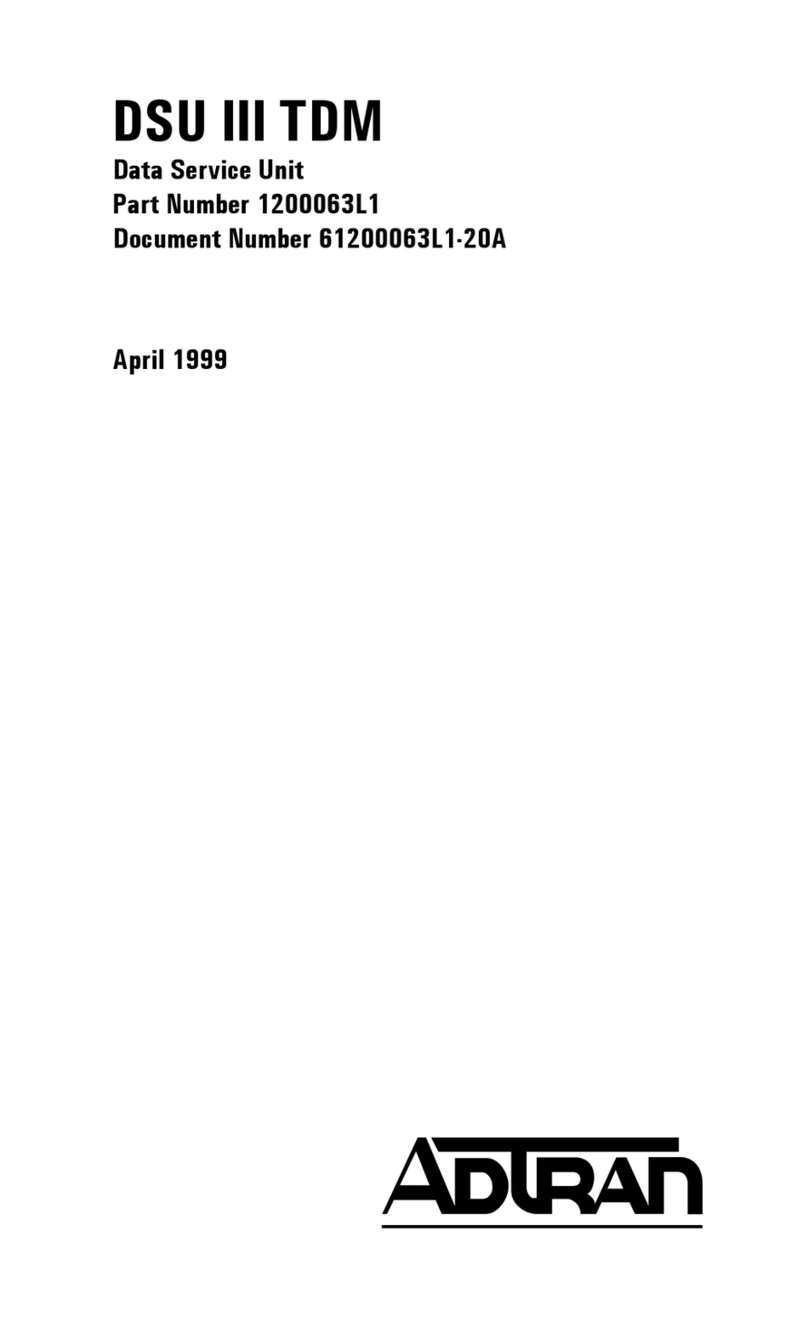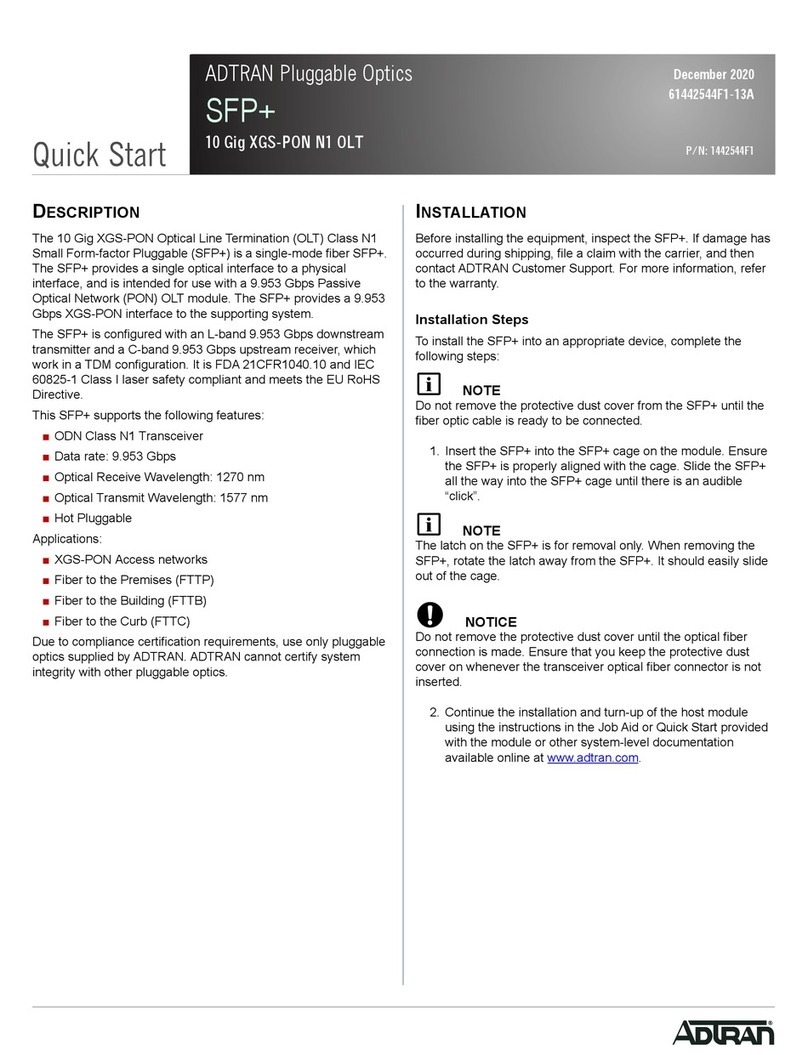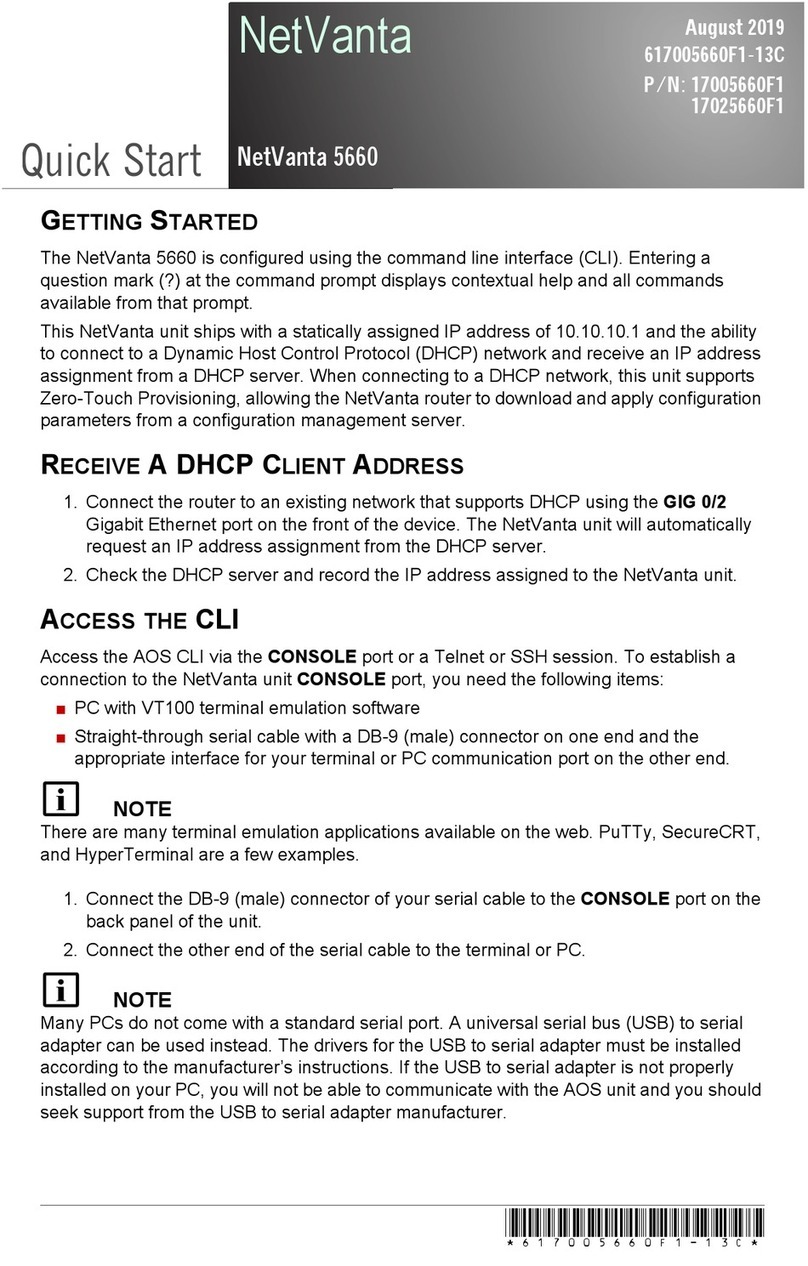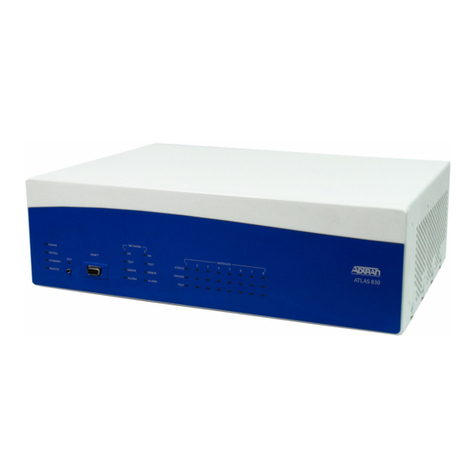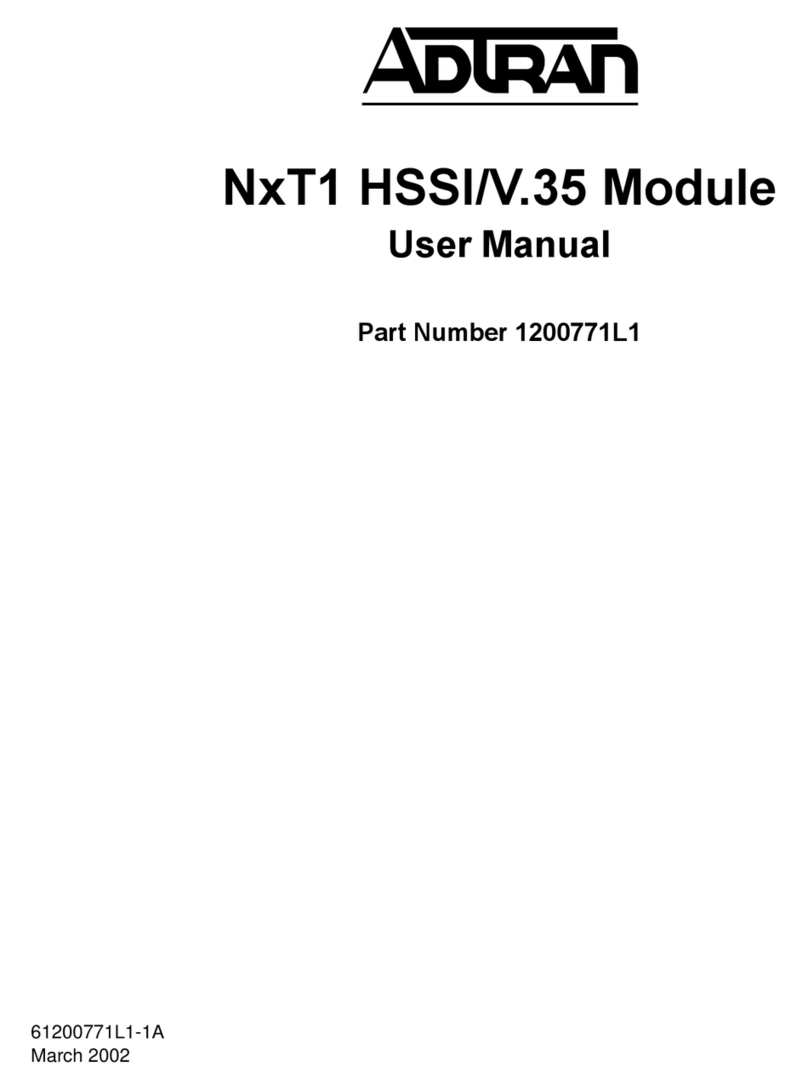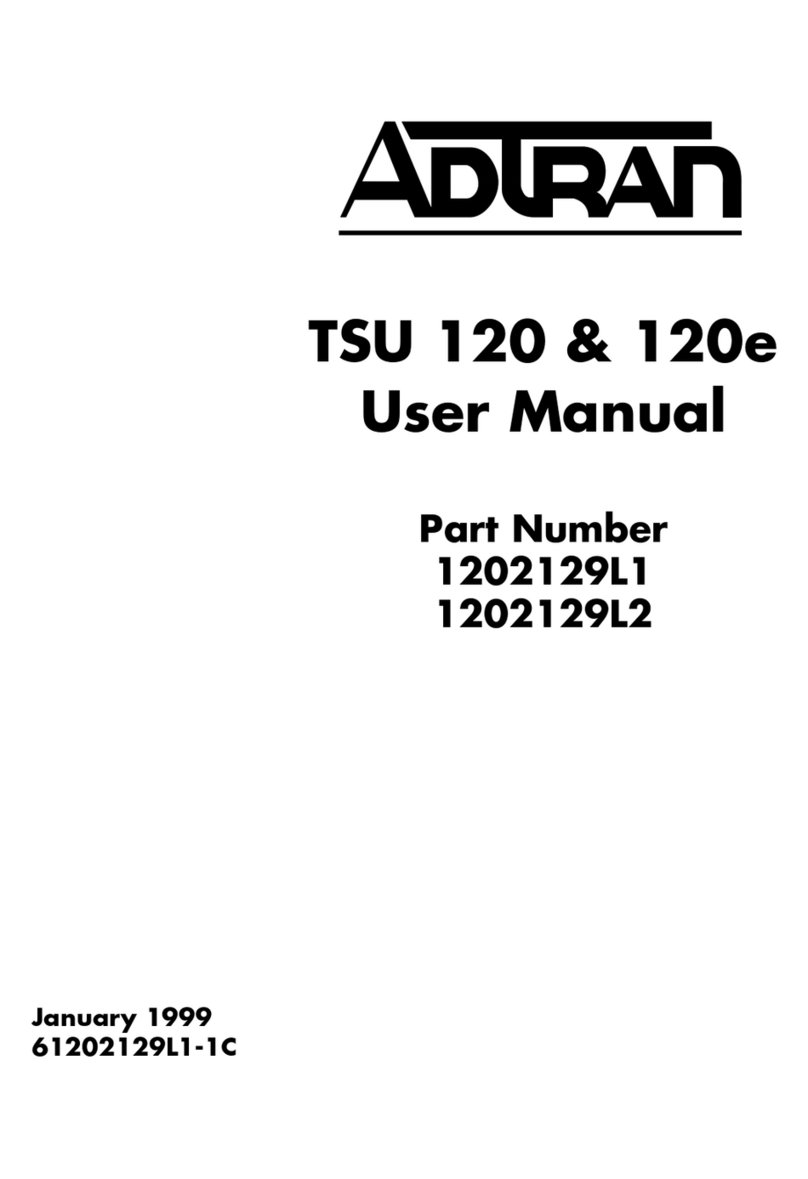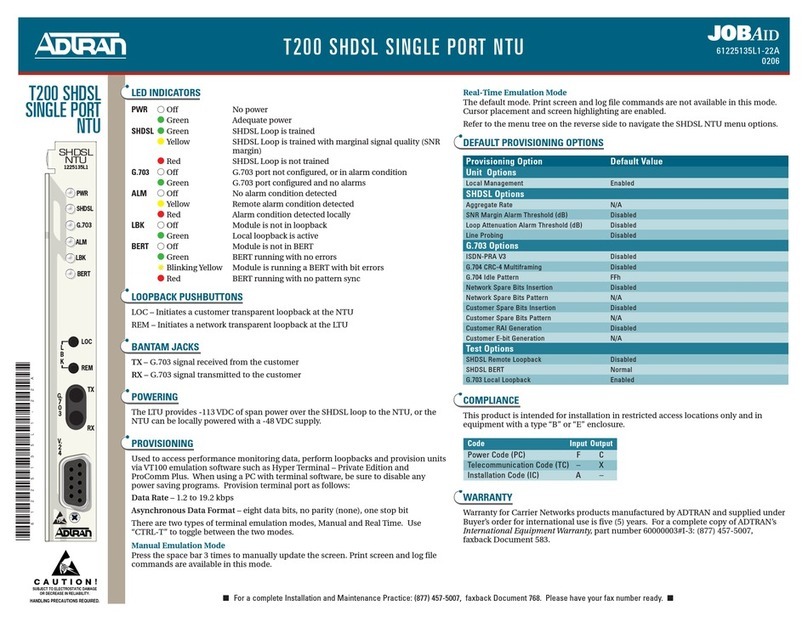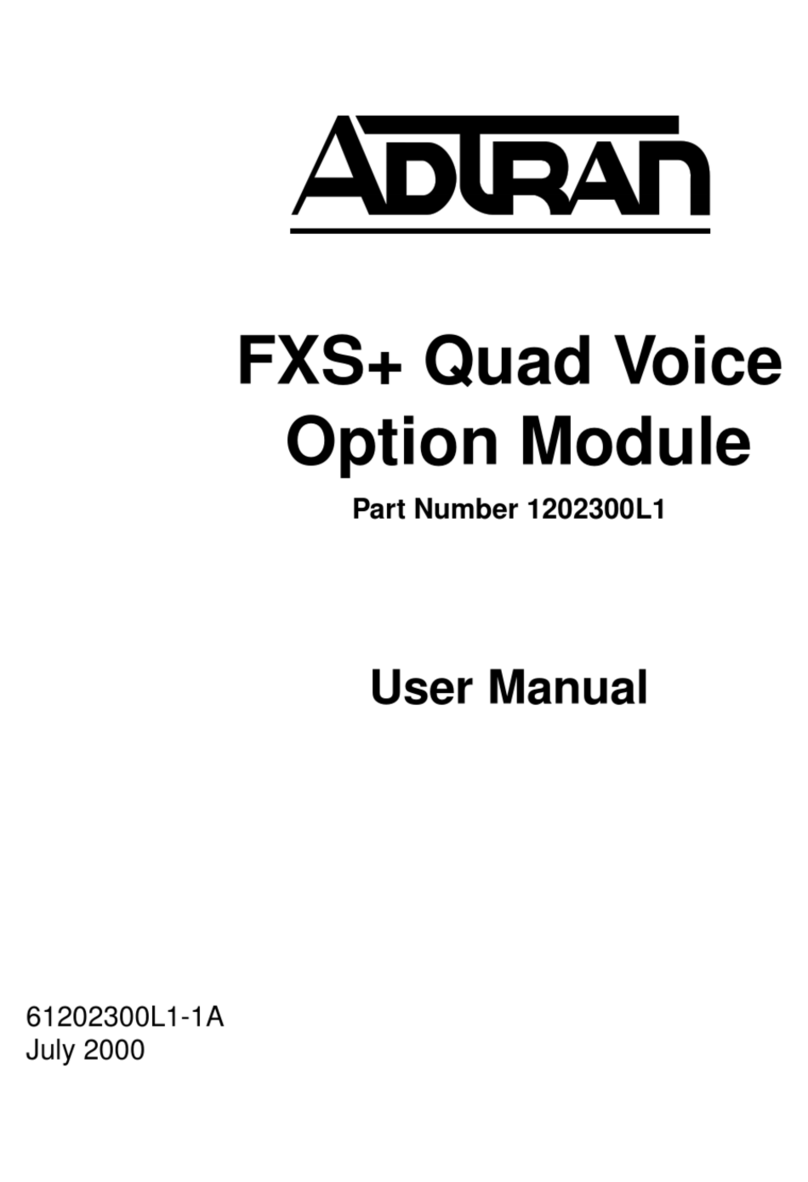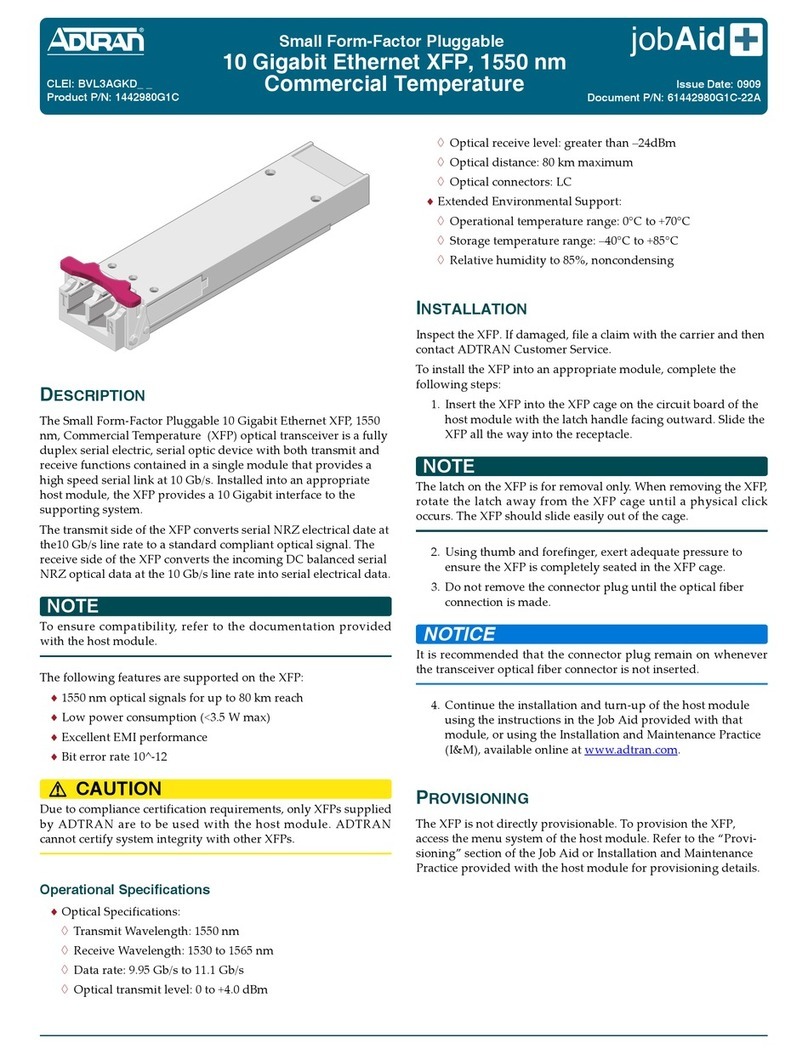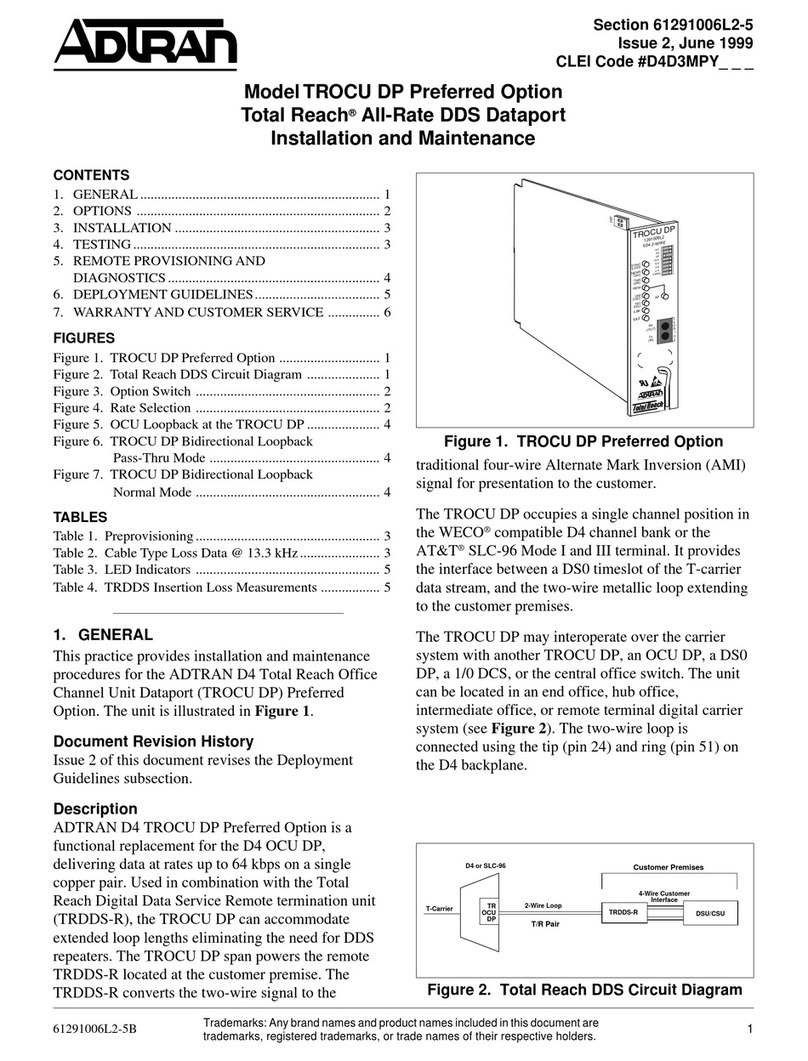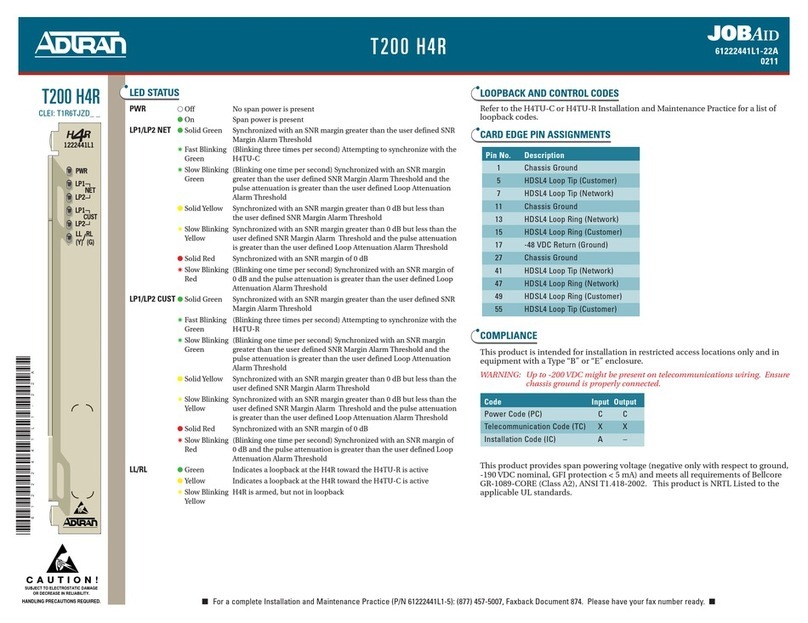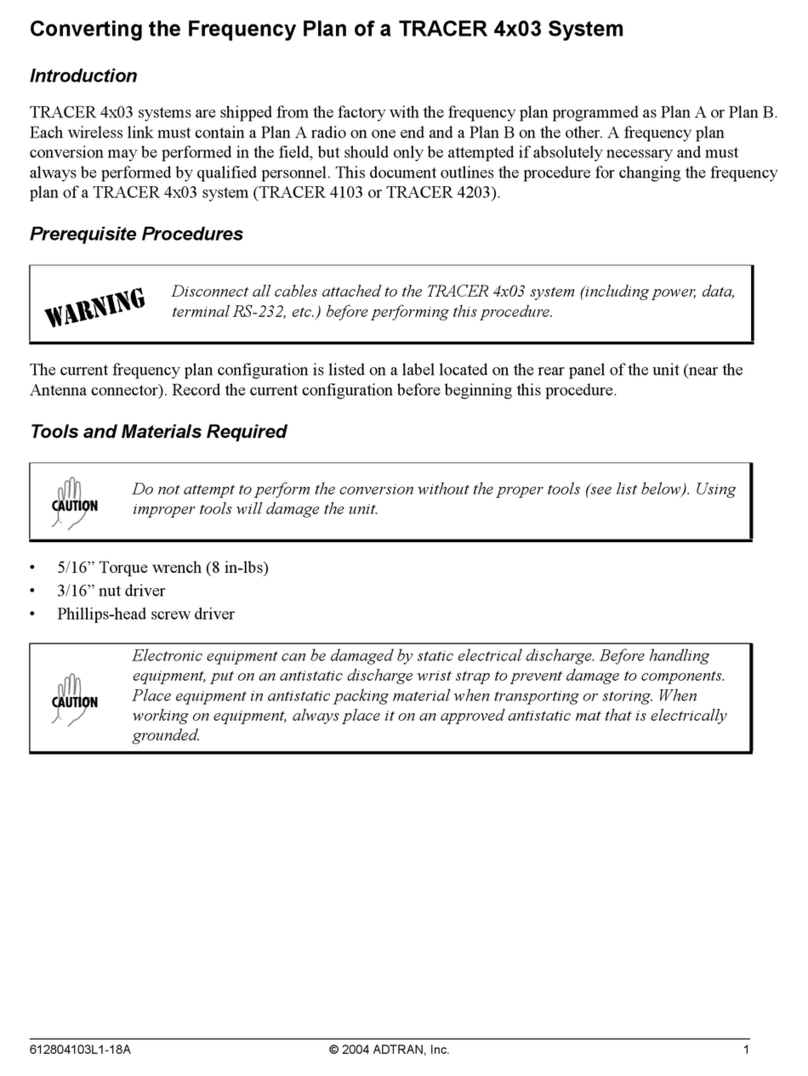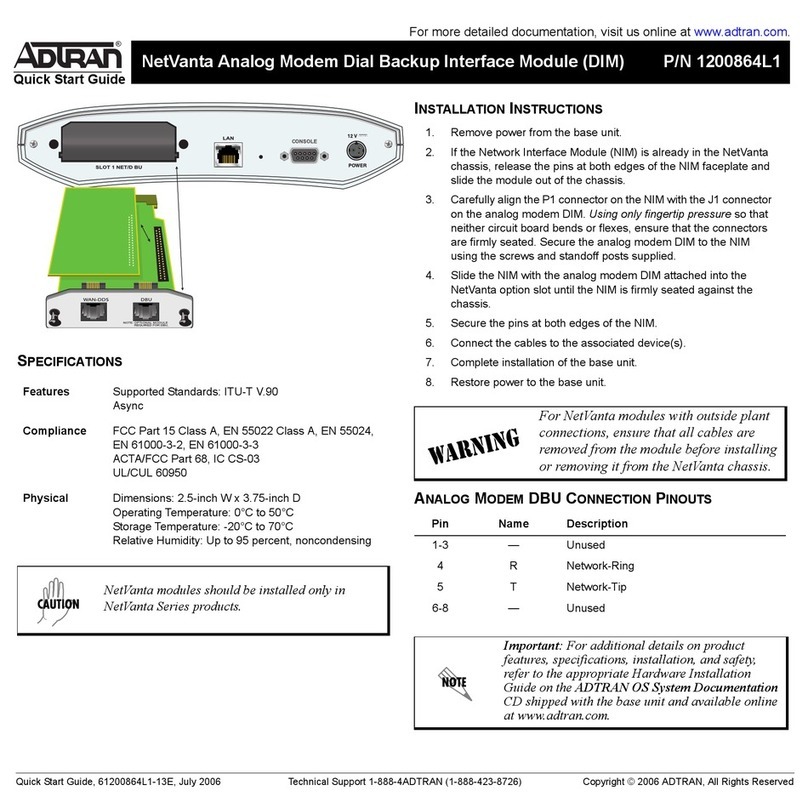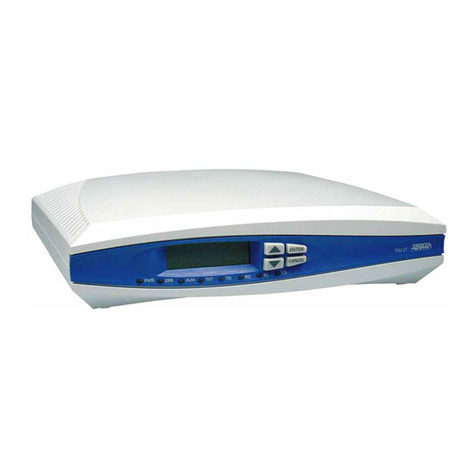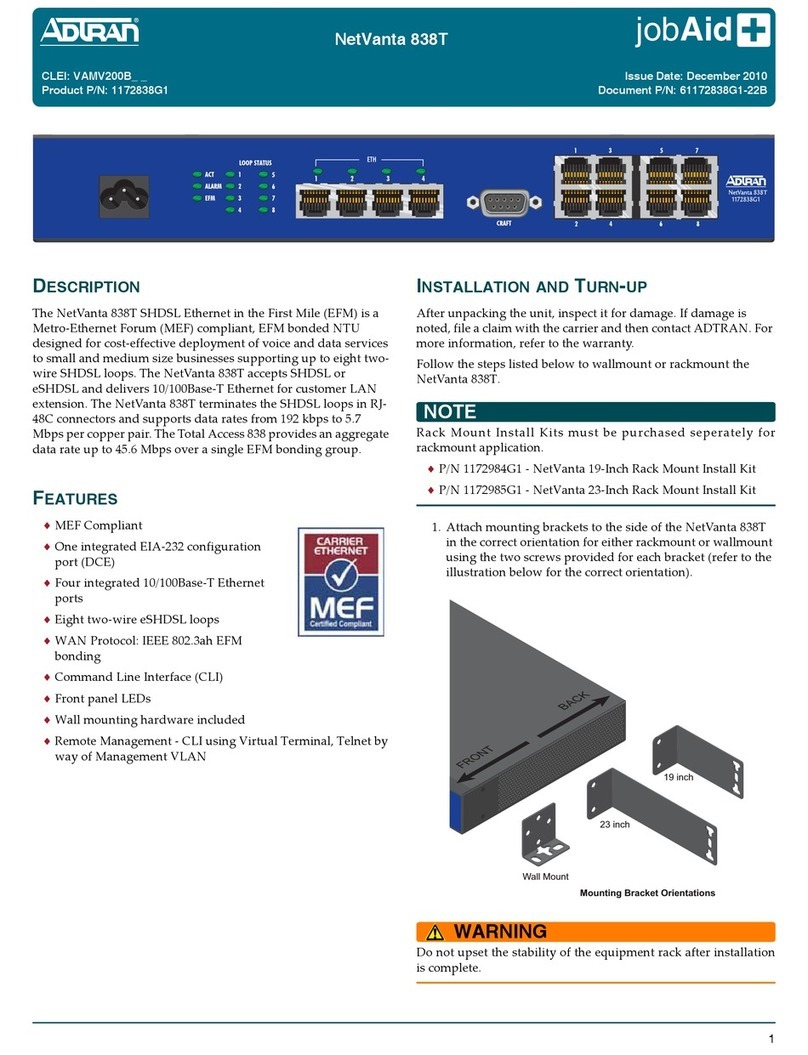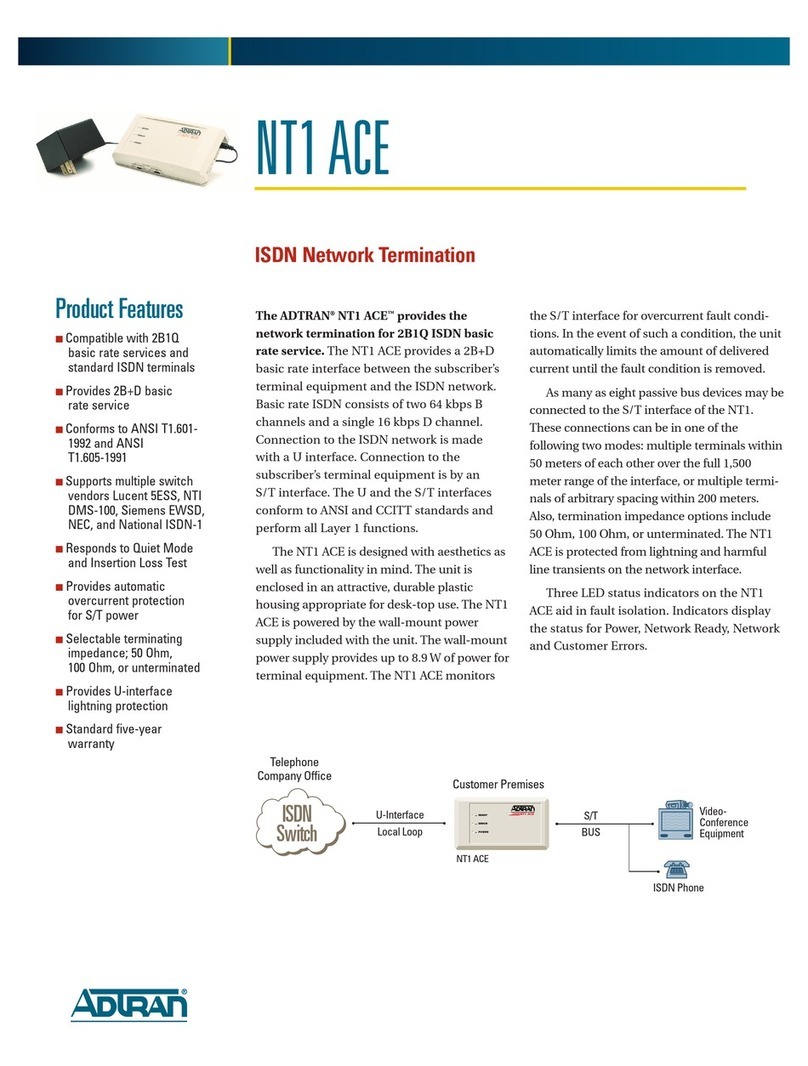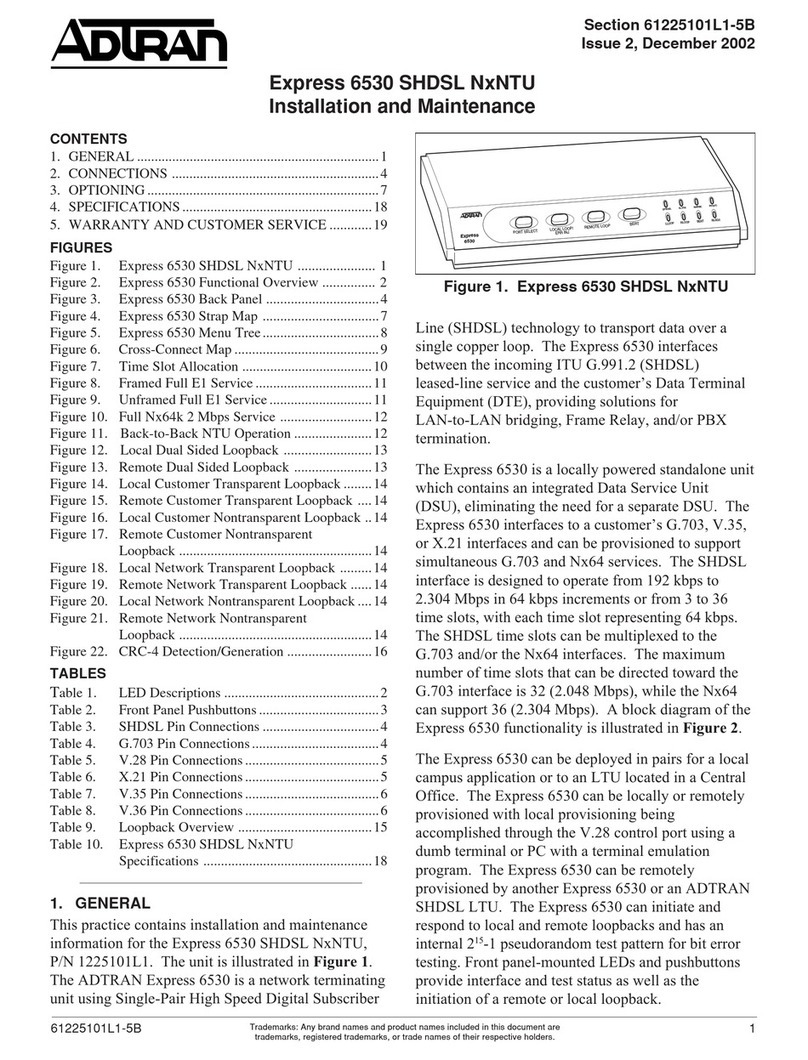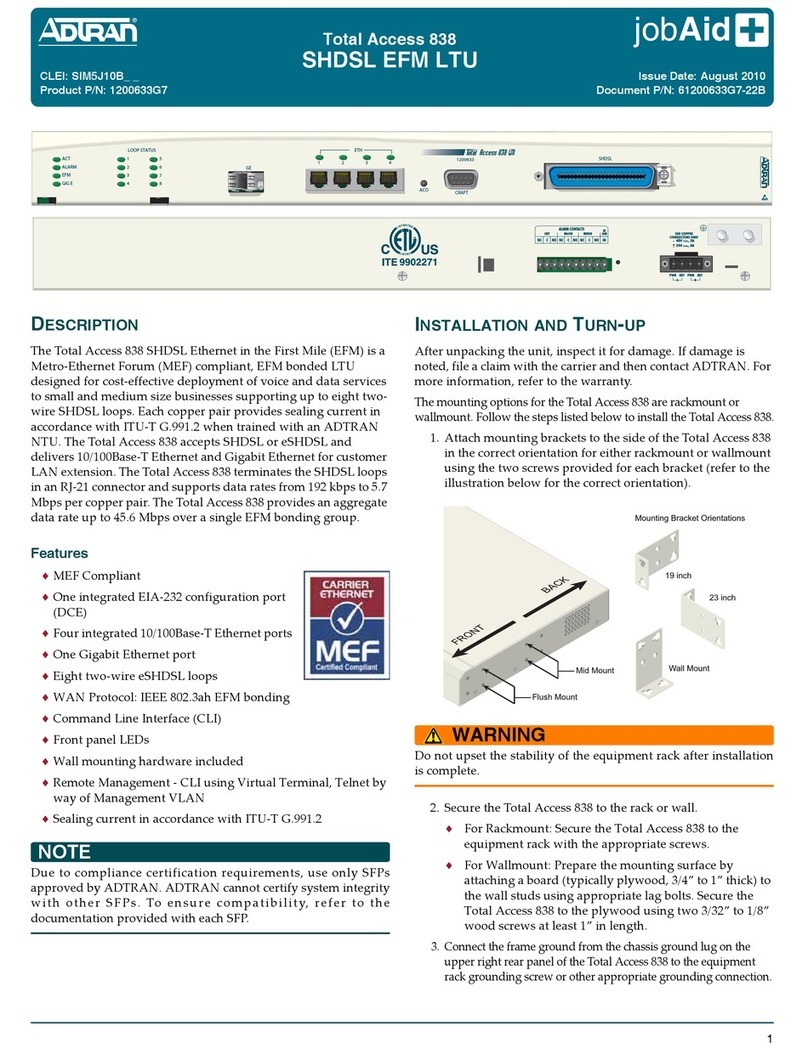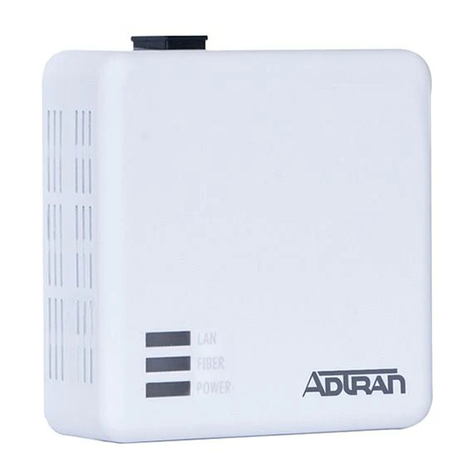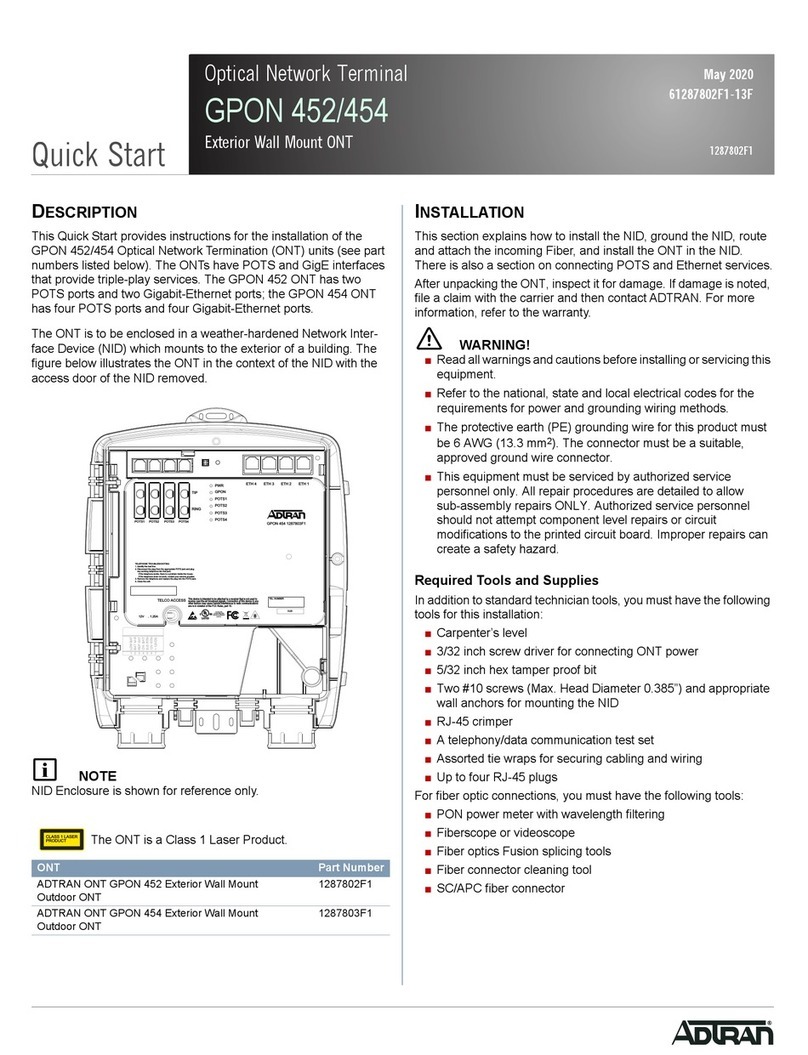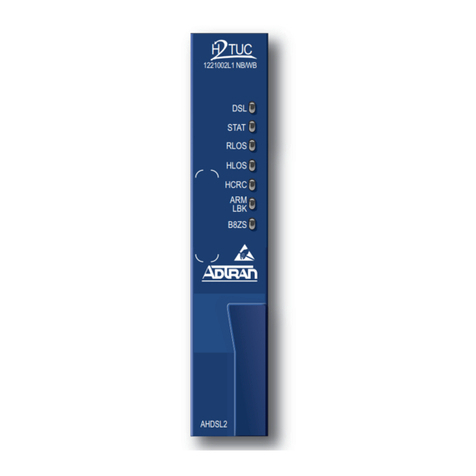
PRICING AND AVAILABILITY 800.827.0807
TECH SUPPORT 800.726.8663
RETURN FOR REPAIR 256.963.8722
www.adtran.com
61247024L1-22B
Warranty: ADTRAN will replace or repair this product within the warranty period if it does not meet its published specifications or fails while in service.
Warranty information can be found online at www.adtran.com/warranty.
INSTALLATION AND TURN UP
After unpacking the unit, inspect it for damage. If damage is noted, file a claim with the carrier and
then contact ADTRAN. Refer to Warranty.
NOTE: This unit can be provisioned via the RS-232 port or remotely via inband codes.
1. Set the option jumper according to the specific circuit design.
2. Install the HTU-C and HTU-R.
3. The DSL1/DSL2 LED should be green on the HTU-C and HTU-R. The DSX LED should be green
on the HTU-C and the DS1 LED should be green on the HTU-R. The ALM LED on both units
should be dark.
♦HTU-C displays LLOS if not connected to network (no DSX present; LED red).
♦HTU-R has red ALM LED if customer not connected. LP1, LP2, line coding (B8ZS or AMI) and
framing (ESF or SF) (if not UNFR) LEDs should light.
4. If the Status LED is green, do the following:
♦Verify that the signal quality is the same on each loop. Ensure signal quality indicators do not
fluctuate.
♦Verify that the loop loss is within design limits. If there is a difference of more than 1 dB between
the two loops, a problem exists with the cable pairs.
♦If errors occur, use the Current System Status and Performance History screens to determine
where they are occurring. For more information, refer to the “Troubleshooting” section below.
5. If everything checks out, proceed with BERT testing.
TROUBLESHOOTING
The HTU-C ALM LED is yellow, but no errors are indicated by the HTU-R:
♦A BPV, Frame error (SF) or CRC error (ESF) was detected at the DSX-1 interface. This indicates a
possible network or wiring problem between the HTU-C and the DSX. This does not indicate
problems on the HDSL loops.
The HTU-R DS1 LED is flashing, but the HTU-C indicates no errors:
♦A BPV, Frame Error (SF) or CRC Error (ESF) was detected at the DS1 interface. This indicates a
wiring problem, or a B8ZS/AMI mismatch between the HTU-R and the customer equipment. This
does not indicate problems on the HDSL loops.
The HTU-R has power, but the DSL 1/DSL 2 LEDs are dark. The unit cannot sync with HTU-C:
♦Simplex power for powering the HTU-R can be passed over cable pairs that contain load coils or that
are too long for HDSL synchronization. Using a TIMS, verify the circuit is within design limits.
♦The HTU-R will power up if there is at least one good conductor on each loop. To test, remove the
protector plug at the MDF and measure t-r resistance to the HTU-R on both loops. The HTU-R places
a 3-ohm short between t-r on both loops. An extremely high impedance indicates an open conductor.
An extremely low reading on one loop may indicate a t-r short in the field. In the field, measure t-t
and t-r voltage with the HTU-C installed and compare to the t-t voltage chart. The absence of these
voltages indicates open pairs or mis-wiring. As with other circuits, use standard resistance
measurements between each conductor and ground to test for a grounded conductor.
♦A high resistance open that degrades to where it causes the circuit to lose sync can be “resealed” by
reseating the HTU-C. Test the cable pairs before reseating the HTU-C.
Running excessive errors on the loop:
♦Measure t-r resistance (refer to above). If the pairs are unbalanced by more than 4 ohms, or a
measurement varies significantly, this could indicate a high resistance open or an intermittent fault on
the loop with the higher measurement. A TDR is typically required to locate this splice for repair.
♦Excessively long bridged taps can also cause errors. Check the records and/or use a TDR to verify the
location and length of bridged taps.
♦Using the Performance History screen, it is often possible to see that many more errors are being
received on a particular loop or at a particular unit. The fault will typically be very close to the unit
receiving the most errors.
No power at the HTU-R:
♦This could be caused by a loop with two open conductors. Measure t-r resistance from the MDF to
the HTU-R or use the voltage chart to see which pair is open.
CIRCUIT PARAMETERS UNDER NORMAL OPERATION
♦LOSS ≤30 dB
♦Signal quality ≥ 4 (DSL1/DSL2 LEDs green), with no fluctuation and equal on both loops
♦All HDSL Deployment Guidelines are met
PROVISIONING OPTIONS
Setting Options Default
DSX 1 LBO 0–133 feet ABAM; 133–266; 266–399;
399–533; 533–655; EXT (1)
0-133 feet ABAM
DSX-1/DS1 Line Code B8ZS; AMI B8ZS
DSX-1/DS1 Framing AUTO; UNF: Forced Conversion ESF; SF AUTO
NIU Loopback Enabled; Disabled Enabled
New England 1:6 LPBK Enabled; Disabled Disabled
Loopback Timeout NONE; 60 MIN; 120 MIN 120 MIN
Customer Loss Response AIS; CDI; LPBK AIS
Latching Loopback Mode T1; FT1 T1
Performance Reporting Message NPRM; SPRM; NONE; AUTO AUTO
DS1 TX LVL 0 dB; –7.5 dB; –15 dB 0 dB
Shelf Alarm (2) Enabled; Disabled Disabled
Span Power (3) Enabled; Disabled Enabled
1. External option only available when using 220 HTU-C (P/N 1247001Lx). It is the default setting when
used with this form factor.
2. Shelf Alarm only available when using DDM+ or 3192 HTU-C (P/N 124x003Lx or 124x004Lx).
3. Span Power is an option that is only valid for the HTU-C and will not display on the HTU-R user inter-
face.
HDSL
T200 HTU-R, Local Powered, 60 mA
